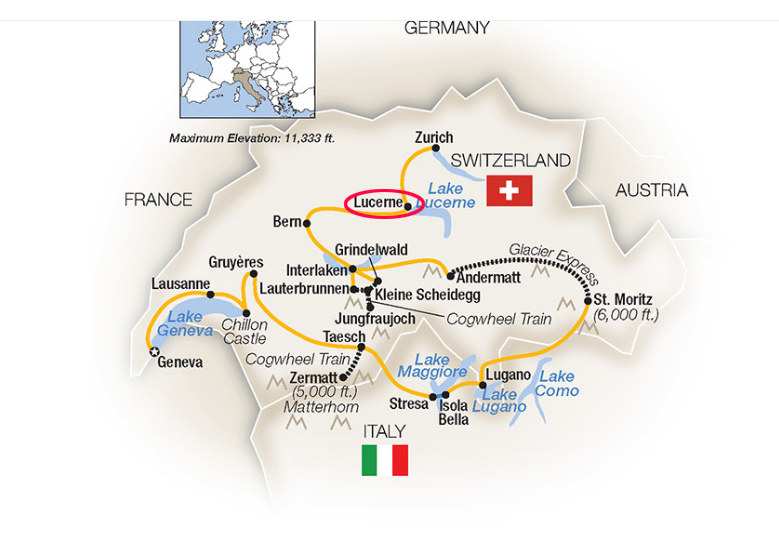Switzerland: Lucerne Part 2 - Street Scenes
Sep 20, 2021 15:01:12 #
We started our walk in Lowenplatz and stopped in a small park to view Bertel Thorvaldsen's famous carving of a dying lion (the Lion Monument, or Löwendenkmal).
The Lion Monument (German: Löwendenkmal), or the Lion of Lucerne, is a rock relief in Lucerne, Switzerland, designed by Bertel Thorvaldsen and hewn in 1820–21 by Lukas Ahorn. It commemorates the Swiss Guards who were massacred in 1792 during the French Revolution, when revolutionaries stormed the Tuileries Palace in Paris. It is one of the most famous monuments in Switzerland, visited annually by about 1.4 million tourists. In 2006 it was placed under Swiss monument protection.
Mark Twain praised the sculpture of a mortally wounded lion as "the most mournful and moving piece of stone in the world."
From the early 17th century, a regiment of Swiss Guards had served as part of the Royal Household of France. On 6 October 1789, King Louis XVI had been forced to move with his family from the Palace of Versailles to the Tuileries Palace in Paris. In June 1791 he tried to flee to Montmédy near the frontier, where troops under royalist officers were concentrated. In the 1792 10th of August Insurrection, revolutionaries stormed the palace. Fighting broke out spontaneously after the Royal Family had been escorted from the Tuileries to take refuge with the Legislative Assembly. The Swiss Guards ran low on ammunition and were overwhelmed by superior numbers. A note written by the King half an hour after firing had commenced has survived, ordering the Swiss to retire and return to their barracks. Delivered in the middle of the fighting, this was only acted on after their position had become untenable.
Around 760 of the Swiss Guards defending the Tuileries were killed during the fighting or massacred after surrender. An estimated two hundred more died in prison of their wounds or were killed during the September Massacres that followed. Apart from about a hundred Swiss who escaped from the Tuileries, the only survivors of the regiment were a 300 strong detachment which, with the King's authorization, had been sent to Normandy to escort grain convoys a few days before August 10. The Swiss officers were mostly amongst those massacred, although Major Karl Josef von Bachmann — in command at the Tuileries — was formally tried and guillotined in September, still wearing his red uniform of the Guard. Two surviving Swiss officers achieved senior rank under Napoleon.
Among the Swiss Guards in France who survived the insurrection and soldiers from disbanded Swiss line regiments, about 350 later joined the Revolutionary Armies of the French Republic, while others joined the counter-revolutionaries in the War in the Vendée. In 1817, the Swiss Federal Diet awarded 389 of the survivors with the commemorative medal Treue und Ehre (Loyalty and Honor).
The monument is dedicated Helvetiorum Fidei ac Virtuti ("To the loyalty and bravery of the Swiss"). Carved into the cliff face, the monument measures ten metres in length and six metres in height. The dying lion is portrayed impaled by a spear, covering a shield bearing the fleur-de-lis of the French monarchy; beside him is another shield bearing the coat of arms of Switzerland. The inscription below the sculpture lists the names of the officers and gives the approximate numbers of soldiers who died (DCCLX = 760), and survived (CCCL = 350).
The pose of the lion was copied in 1894 by Thomas M. Brady (1849–1907) for his Lion of Atlanta in the Oakland Cemetery in Atlanta, Georgia. The pose of the lion was copied in 1851 for the memorial to the fallen at Fortress Predel near Predel, Slovenia The pose of the lion on a shield with Fasces is on the 'Monumento A Friedrich Hensel' near Fort Hensel at 33010 Malborghetto Valbruna, Province of Udine, Italy
MARK TWAIN ON THE MONUMENT:
The Lion lies in his lair in the perpendicular face of a low cliff—for he is carved from the living rock of the cliff. His size is colossal, his attitude is noble. His head is bowed, the broken spear is sticking in his shoulder, his protecting paw rests upon the lilies of France. Vines hang down the cliff and wave in the wind, and a clear stream trickles from above and empties into a pond at the base, and in the smooth surface of the pond the lion is mirrored, among the water-lilies.
Around about are green trees and grass. The place is a sheltered, reposeful woodland nook, remote from noise and stir and confusion—and all this is fitting, for lions do die in such places, and not on granite pedestals in public squares fenced with fancy iron railings. The Lion of Lucerne would be impressive anywhere, but nowhere so impressive as where he is.
— Mark Twain, A Tramp Abroad, 1880
https://en.wikipedia.org/wiki/Lion_Monument
For additional Lucerne images an an historical narrative, please see my previous post: https://www.uglyhedgehog.com/t-711865-4.html#12565720
Mark
The Lion Monument (German: Löwendenkmal), or the Lion of Lucerne, is a rock relief in Lucerne, Switzerland, designed by Bertel Thorvaldsen and hewn in 1820–21 by Lukas Ahorn. It commemorates the Swiss Guards who were massacred in 1792 during the French Revolution, when revolutionaries stormed the Tuileries Palace in Paris. It is one of the most famous monuments in Switzerland, visited annually by about 1.4 million tourists. In 2006 it was placed under Swiss monument protection.
Mark Twain praised the sculpture of a mortally wounded lion as "the most mournful and moving piece of stone in the world."
From the early 17th century, a regiment of Swiss Guards had served as part of the Royal Household of France. On 6 October 1789, King Louis XVI had been forced to move with his family from the Palace of Versailles to the Tuileries Palace in Paris. In June 1791 he tried to flee to Montmédy near the frontier, where troops under royalist officers were concentrated. In the 1792 10th of August Insurrection, revolutionaries stormed the palace. Fighting broke out spontaneously after the Royal Family had been escorted from the Tuileries to take refuge with the Legislative Assembly. The Swiss Guards ran low on ammunition and were overwhelmed by superior numbers. A note written by the King half an hour after firing had commenced has survived, ordering the Swiss to retire and return to their barracks. Delivered in the middle of the fighting, this was only acted on after their position had become untenable.
Around 760 of the Swiss Guards defending the Tuileries were killed during the fighting or massacred after surrender. An estimated two hundred more died in prison of their wounds or were killed during the September Massacres that followed. Apart from about a hundred Swiss who escaped from the Tuileries, the only survivors of the regiment were a 300 strong detachment which, with the King's authorization, had been sent to Normandy to escort grain convoys a few days before August 10. The Swiss officers were mostly amongst those massacred, although Major Karl Josef von Bachmann — in command at the Tuileries — was formally tried and guillotined in September, still wearing his red uniform of the Guard. Two surviving Swiss officers achieved senior rank under Napoleon.
Among the Swiss Guards in France who survived the insurrection and soldiers from disbanded Swiss line regiments, about 350 later joined the Revolutionary Armies of the French Republic, while others joined the counter-revolutionaries in the War in the Vendée. In 1817, the Swiss Federal Diet awarded 389 of the survivors with the commemorative medal Treue und Ehre (Loyalty and Honor).
The monument is dedicated Helvetiorum Fidei ac Virtuti ("To the loyalty and bravery of the Swiss"). Carved into the cliff face, the monument measures ten metres in length and six metres in height. The dying lion is portrayed impaled by a spear, covering a shield bearing the fleur-de-lis of the French monarchy; beside him is another shield bearing the coat of arms of Switzerland. The inscription below the sculpture lists the names of the officers and gives the approximate numbers of soldiers who died (DCCLX = 760), and survived (CCCL = 350).
The pose of the lion was copied in 1894 by Thomas M. Brady (1849–1907) for his Lion of Atlanta in the Oakland Cemetery in Atlanta, Georgia. The pose of the lion was copied in 1851 for the memorial to the fallen at Fortress Predel near Predel, Slovenia The pose of the lion on a shield with Fasces is on the 'Monumento A Friedrich Hensel' near Fort Hensel at 33010 Malborghetto Valbruna, Province of Udine, Italy
MARK TWAIN ON THE MONUMENT:
The Lion lies in his lair in the perpendicular face of a low cliff—for he is carved from the living rock of the cliff. His size is colossal, his attitude is noble. His head is bowed, the broken spear is sticking in his shoulder, his protecting paw rests upon the lilies of France. Vines hang down the cliff and wave in the wind, and a clear stream trickles from above and empties into a pond at the base, and in the smooth surface of the pond the lion is mirrored, among the water-lilies.
Around about are green trees and grass. The place is a sheltered, reposeful woodland nook, remote from noise and stir and confusion—and all this is fitting, for lions do die in such places, and not on granite pedestals in public squares fenced with fancy iron railings. The Lion of Lucerne would be impressive anywhere, but nowhere so impressive as where he is.
— Mark Twain, A Tramp Abroad, 1880
https://en.wikipedia.org/wiki/Lion_Monument
For additional Lucerne images an an historical narrative, please see my previous post: https://www.uglyhedgehog.com/t-711865-4.html#12565720
Mark
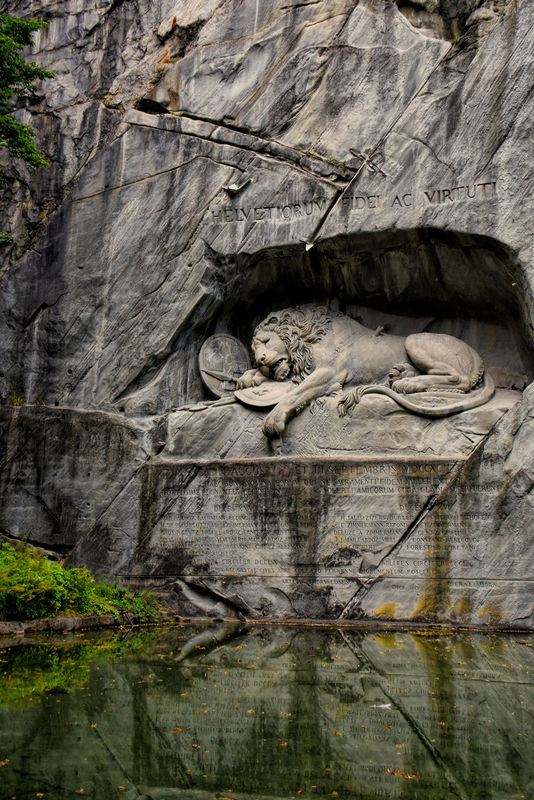
(Download)
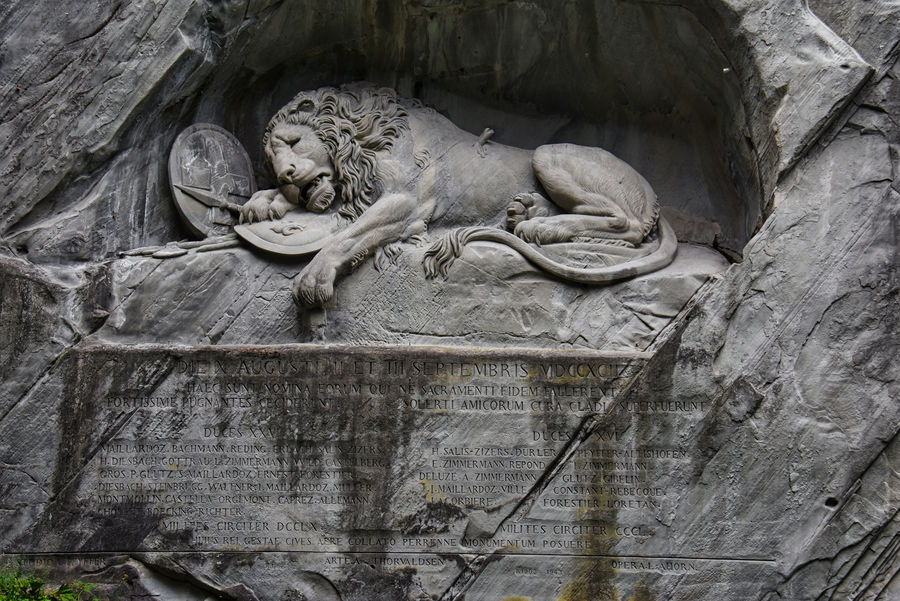
(Download)
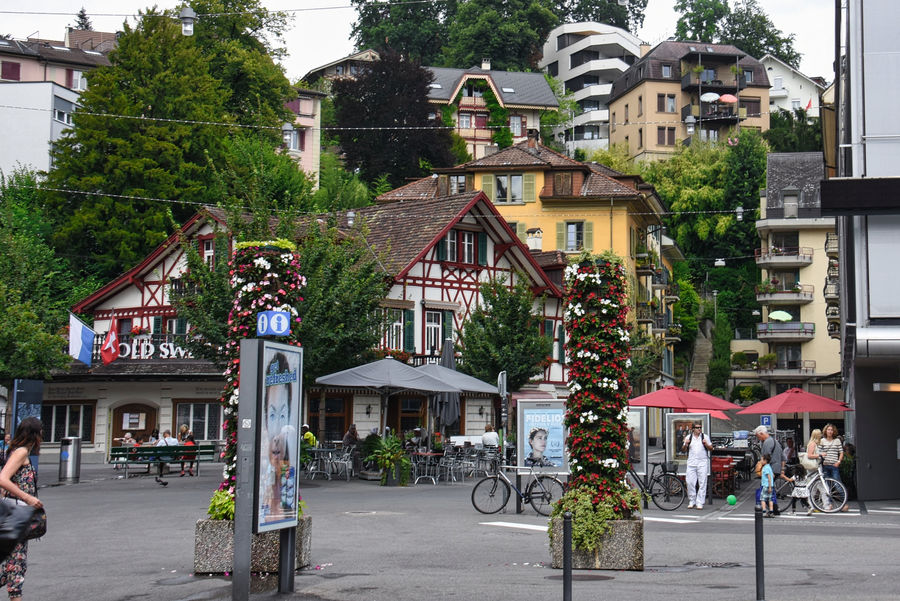
(Download)
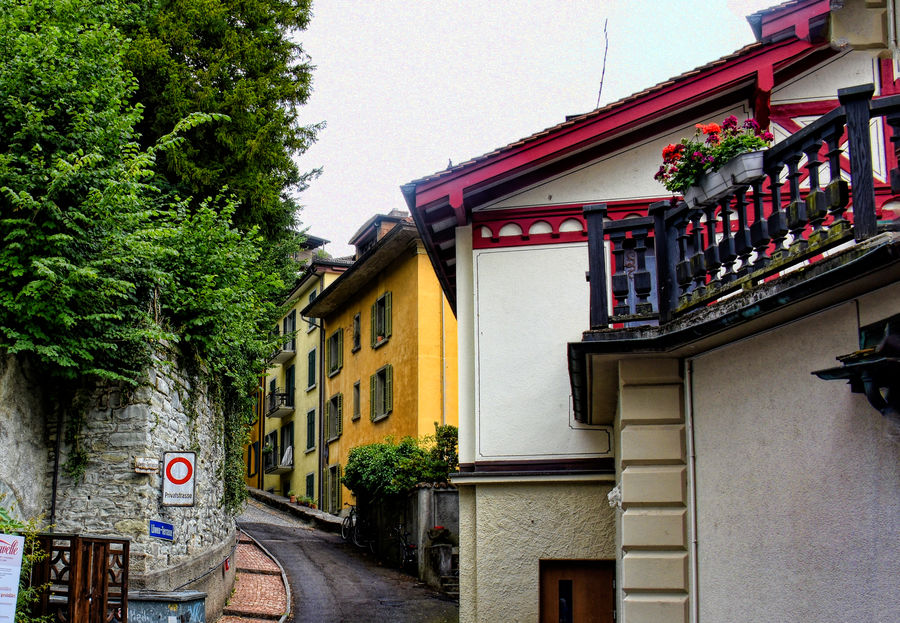
(Download)
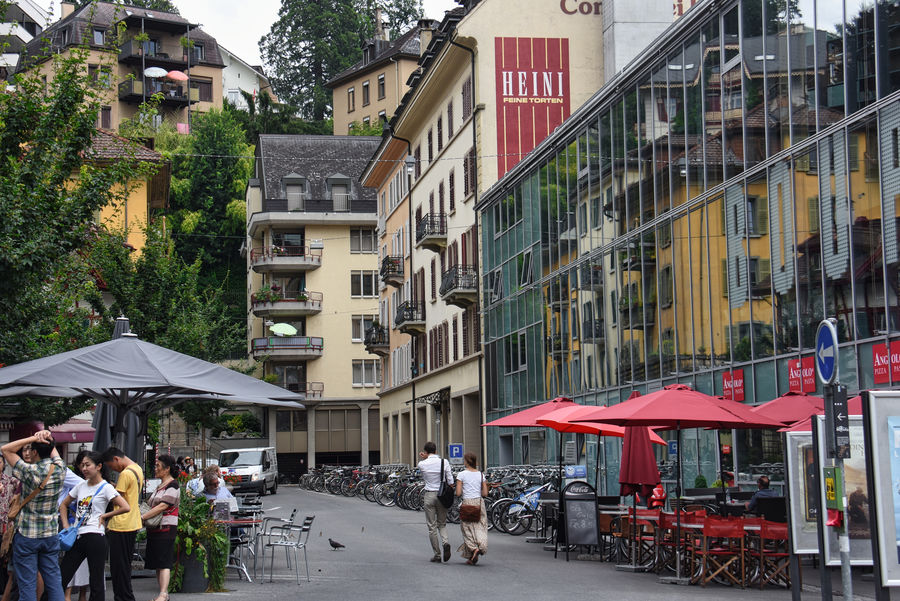
(Download)
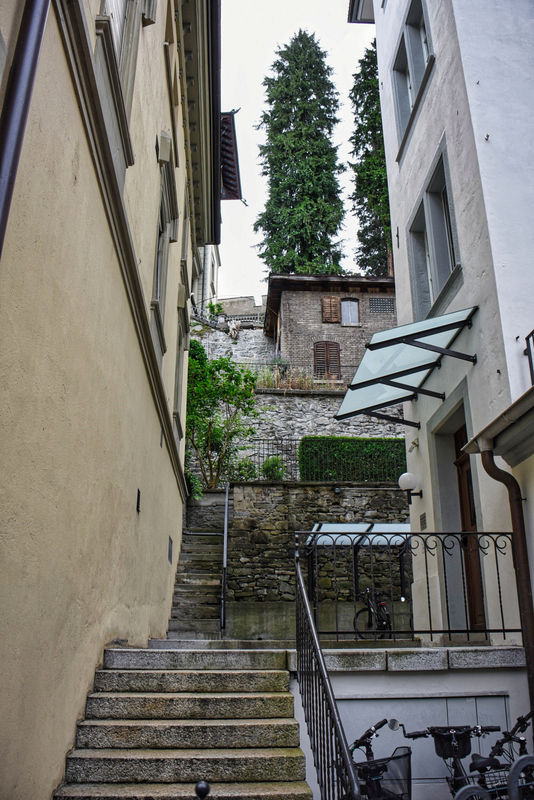
(Download)
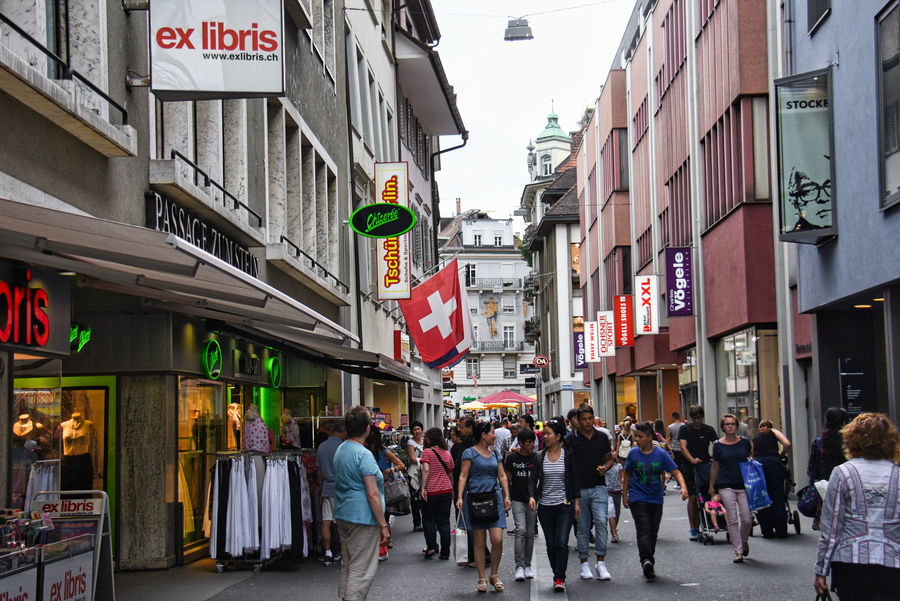
(Download)
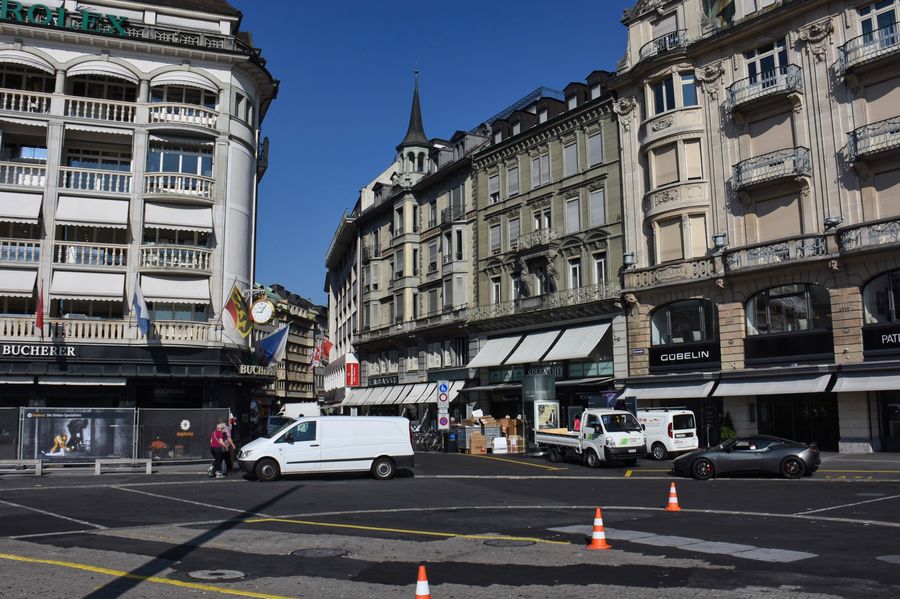
(Download)

(Download)

(Download)
Sep 20, 2021 15:05:56 #
Sep 20, 2021 15:07:00 #
Sep 20, 2021 15:09:40 #
Steved3604 wrote:
Very nice. Learned something and felt like I was there.
Thanks so much Steve. So pleased that I could accomplish this with my post.
Sep 20, 2021 15:09:50 #
Sep 20, 2021 15:10:25 #
Sep 20, 2021 15:12:41 #
Excellent set, Mark. Love the street scenes in old European cities. Very nice write-up too.
Sep 20, 2021 15:19:28 #
srfmhg wrote:
We started our walk in Lowenplatz and stopped in a... (show quote)
I have been fortunate to see this magnificent Lion of Lucerne but didn't know the history of it. Thank you for posting these excellent captures.






Sep 20, 2021 15:29:01 #
Sep 20, 2021 15:58:34 #
Sep 20, 2021 17:22:16 #
srfmhg wrote:
We started our walk in Lowenplatz and stopped in a... (show quote)
Spectacular location and images
💞💎🤗💎💞
Sep 20, 2021 17:34:47 #
angler wrote:
Excellent set Mark.
Thanks so much Jim. I always appreciate your kind comments.
Sep 20, 2021 17:36:38 #
NMGal wrote:
The Lion memorial is impressive. Really nice series.
Thanks so much Barbara. It was emotional when we first heard the story. I had never seen the Mark Twain quote before researching.
Sep 20, 2021 17:37:54 #
John from gpwmi wrote:
Excellent set, Mark. Love the street scenes in old European cities. Very nice write-up too.
Thanks very much John. I'm always torn between landscapes and European street scenes - I love both!
Sep 20, 2021 17:39:13 #
Annie-Get-Your-Gun wrote:
I have been fortunate to see this magnificent Lion... (show quote)
Thanks so much Annie. I'm so pleased that you took the time to read the narrative and enjoyed it!
If you want to reply, then register here. Registration is free and your account is created instantly, so you can post right away.

